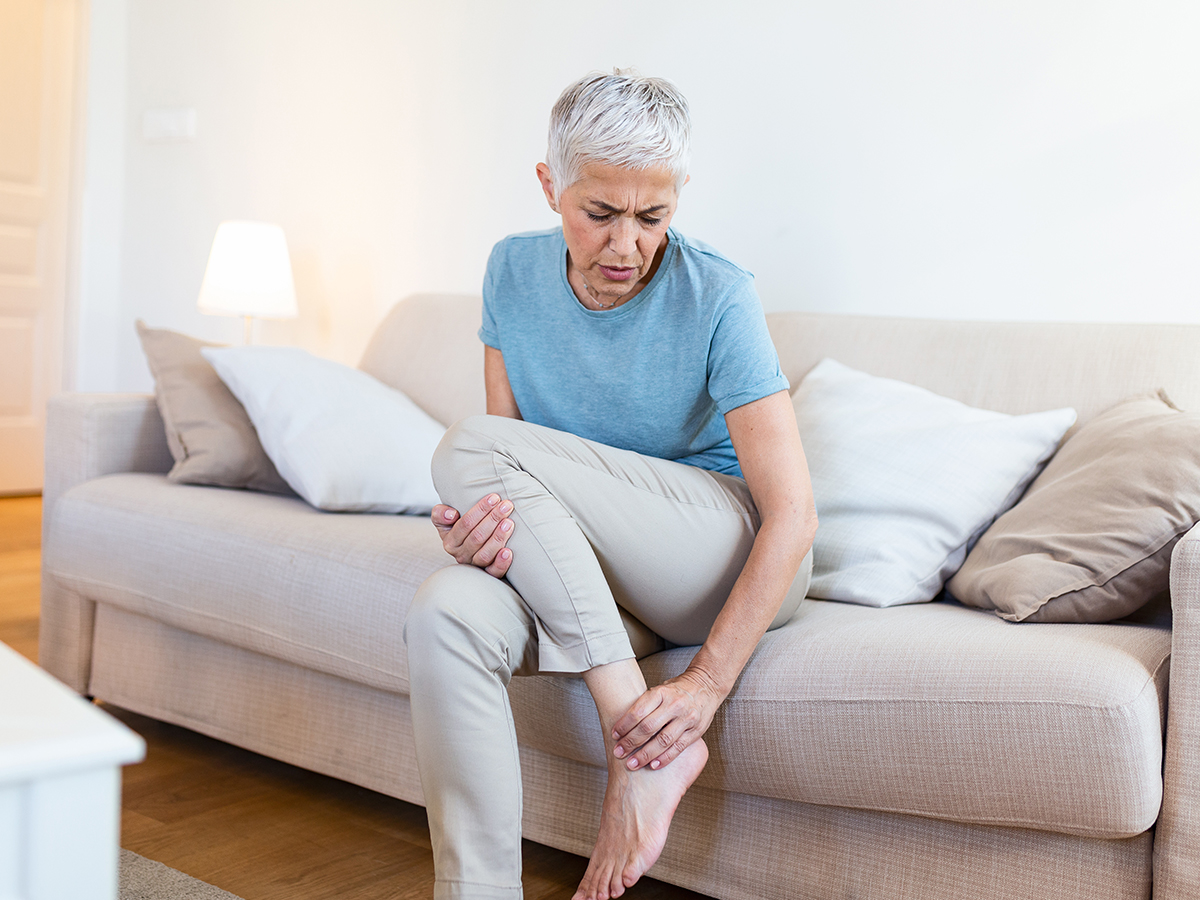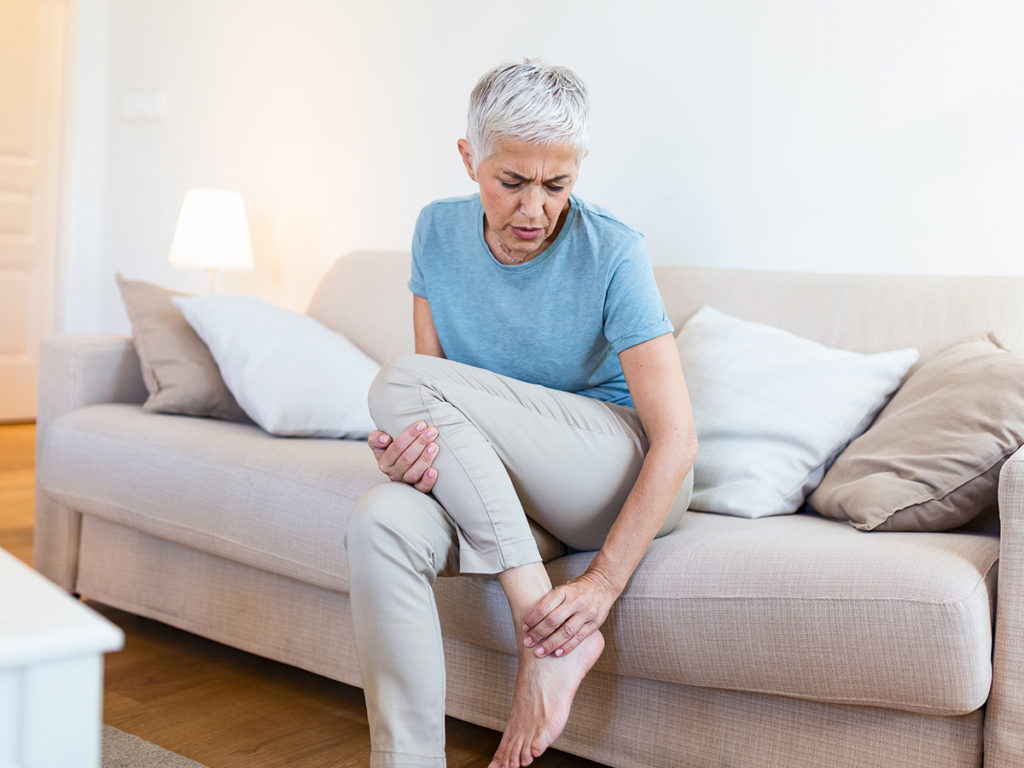

Does the ground feel firmer and less forgiving than it used to?
Do you struggle to find comfortable shoes – or ones that are wide enough for your feet?
Do your feet often swell and you’re not sure why?
All these changes, alongside many others, can be explained by the natural changes our feet go through as we get older. Thankfully, these changes don’t have to mean putting up with aches and pains in our everyday lives – especially if these symptoms are affecting our ability to move, stay independent, and do the things we love. Our podiatry team helps older adults stay active and pain-free on their feet every day – and today we’ve shared seven common changes to your feet that you may experience as you age.
Less Cushioning
The fat pads at the heels and balls of our feet that cushion our feet, protect the bones and tissues and help us absorb shock from the ground diminish over time. This can make our bones feel more prominent and we may feel like we’re walking directly on the bone, leading to aches and pains.
Thinner, Dryer Skin
Like the skin on your face, the skin on your feet will also lose elasticity, changing its texture and making it thinner and more vulnerable. Your skin will also become dryer as the fat pads diminish, meaning that callus can quickly build and crack.
Toenail Changes
After decades of knocking in all sorts of shoes, our toenails can grow thicker and firmer or more brittle and flaky. Toenails also become more susceptible to fungal nail infections, which can give them a yellow/white discolouration and moth-eaten appearance. For many, trimming thick and hard nails can become difficult, so they start seeing their podiatrist regularly to trim and reduce the thickness of their toenails, while treating any infections.
Bent Toes & Bunions
Hammertoes, claw toes and mallet toes all describe positions where the toes become permanently bent at the joints. This can lead to painful corns and calluses, especially where the toes rub against one another or the shoes. Bunions are also more prevalent with age as they develop and worsen over many years. This can make it difficult to find shoes that comfortably fit the width of the forefoot with a bunion.
Changes to the Stability In Our Joints
With changes in the strength and elasticity of our ligaments come changes to the stability of our joints, which are supported and held in position by the ligaments. This can make us vulnerable to muscle and joint pain, such as at the ankles and knees. It may also affect our balance and coordination, which increases the risk of falling.
Less support and stability in the arch may also cause our feet to flatten and widen, while the reduced stability may mean our muscles and tendons need to work overtime, leading to strains and injuries.
Arthritic Bone & Joint Damage
One in six Australians have arthritis. Arthritis leads to changes in the integrity, structure and function of a joint over a long time, often resulting in stiff and painful joints in later life. The most common joints affected are the big toe joint, ankle joints, and the knee joint.
Circulation Problems
Our circulation tends to worsen over time and our feet, being the furthest away from the heart, are often the first to display the effects of diminished circulation. We may notice that the hair on our toes stops growing, the skin seems paler and cooler, and cuts or injuries to the feet take a longer time to heal – which increases our susceptibility to infection. We may also start to lose some of the feeling in our feet thanks to nerve changes.
If you notice that your feet are becoming swollen regularly or that you now have more prominent varicose veins, this may be from the effects of ageing on your veins. Our veins work to move blood up from the feet and back to the heart against gravity. If they fail to perform their function effectively due to losing strength, swelling can occur.
We Help Seniors Stay Happy & Healthy On Their Feet
At My FootDr, we know how important it is to be able to stay active, mobile and independent in your later years. Our experienced podiatrists help care for and protect your feet in light of all these changes we’ve described, from caring for your toenails and hard skin, to caring for painful joints, to helping you improve your stability and confidence on your feet.
If you want to feel better on your feet, we’re here to help. You can book your appointment online here or call us on 1800 FOOT DR.
- arthritisaustralia.com.au


